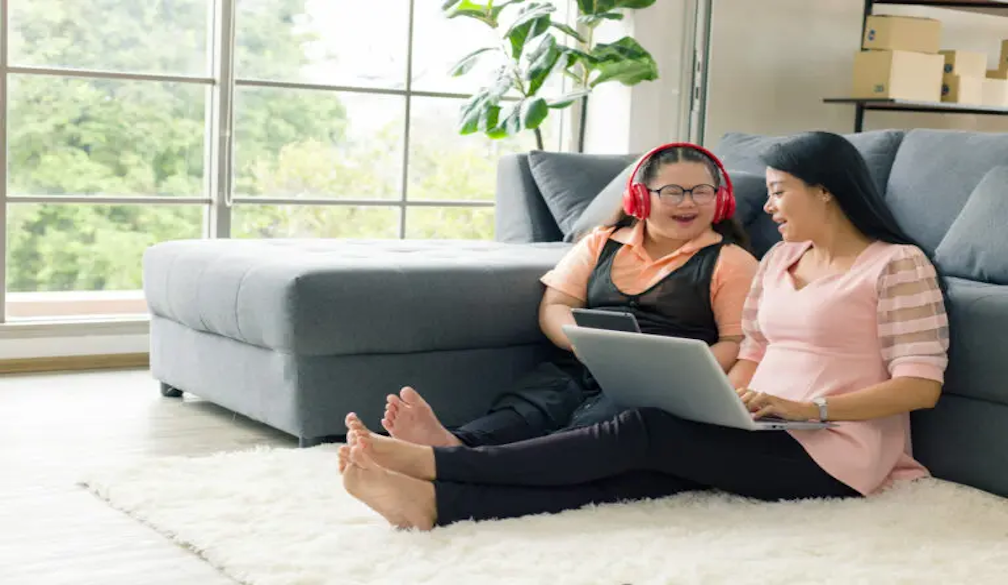How to Use NDIS Funding for Home-Based Therapy Services

Getting therapy at home can really help. You don’t have to leave your house or wait in a busy clinic. The care comes to you, where you feel most comfortable. The National Disability Insurance Scheme (NDIS) makes this kind of support possible for many people across Australia. In fact, for lots of people, it’s the best and easiest way to get the help they need.
Therapists visit your home and give care that fits your everyday life. You get to practice real skills in real situations, like moving safely around your house or learning how to do daily tasks more easily. This kind of therapy is personal, practical, and often more effective than going to a clinic.
In this guide, we’ll show you how you can use your NDIS funding for home-based therapy, what types of help you can get, and tips to make the most of your plan. Whether you’re just starting with the NDIS or you’ve had a plan for years, understanding what’s available can make a big difference. You can also check out the NDIS price guidelines for 2025 to stay informed and plan your support more confidently.
What Is Home-Based Therapy?
Home-based therapy means a therapist comes to your house to work with you. Instead of going to a clinic, you get care right where you live. This can be a great way to make therapy more personal and effective. Therapists see your real environment and can help you build skills that fit your everyday routine.
You’re not just learning in theory, you’re practicing where you actually live, move, and spend your time. That makes a big difference.
Types of Therapy You Can Get at Home
The NDIS supports several therapy services that can be done in your home:
Mobile Physiotherapy
A physiotherapist can help with movement, strength, and recovery. Whether you're healing after surgery, managing chronic pain, or working on balance and coordination, physio home visits allow treatment that’s based on how you actually live.
They can help you move around your home safely, work on exercises in your space, and make sure your home setup supports your goals.
Mobile Occupational Therapy (OT)
OTs help you with everyday tasks. They might suggest changes around your home, like new equipment or layout adjustments, or help you build skills like dressing, cooking, or using tools more safely and efficiently.
Home-based OT means real-time advice and hands-on practice in the environment you use every day.
Mobile Speech Pathology
Speech therapy isn’t just about talking. It also covers language understanding, swallowing, and using communication devices. Having these sessions at home allows the therapist to observe and use real-life scenarios.
Family members can also participate more easily, supporting practice between sessions.
Mobile Exercise Physiology
An exercise physiologist designs workout routines to improve your health, mobility, and strength. When they visit your home, they create plans based on your current ability, space, and even the equipment you already have.
It’s about fitting exercise into your life, not the other way around.
When Is Home-Based Therapy Most Helpful?
Home therapy is especially helpful when:
- You’re recovering from surgery or an injury
- You’re trying to prevent falls and stay safe at home
- You’re learning to use new mobility aids
- You have a condition like stroke, Parkinson’s, or autism where familiar settings improve learning
It’s also a great fit for anyone who has trouble getting to clinics due to mobility or travel limitations.
What NDIS Funding Covers Home-Based Therapy?
To use your NDIS funds for home therapy, you need to know which parts of your plan allow for it.
Capacity Building, Improved Daily Living
Most therapy services are funded under this budget. It covers therapy sessions, assessments, and treatment planning aimed at improving everyday life skills.
Core Supports, Assistance with Daily Life
This category can sometimes be used when therapy helps with essential daily tasks. This depends on your goals and how directly the therapy relates to your needs.
Travel and Provider Costs
As of 2025, NDIS only covers 50% of travel costs for therapists, down from 100%. Also, the extra funding (rural loading) for therapists in regional areas is being phased out.
That means it’s more important than ever to plan how and when to use home-based services.
How to Set Up Home-Based Therapy Through NDIS
1. Review Your Plan
Start by checking your NDIS plan under "Support Categories." Look for funding under "Improved Daily Living", that’s where therapy sessions usually come from.
2. Choose the Right Provider
- Agency-managed: You’ll need to use NDIS-registered providers.
- Plan-managed or self-managed: You have more flexibility to choose any provider, including those not registered with NDIS.
Choosing a provider with home-visit experience is key. Ask them how they handle travel costs, cancellations, and equipment.
3. Create a Service Agreement
This document should include:
- The type and frequency of sessions
- Confirmation that therapy will happen at home
- Costs per session and travel fees
- Your therapy goals and milestones
- What’s included, like reports or follow-up calls
A clear agreement helps avoid surprises and ensures everyone’s on the same page.
4. Work With a Support Coordinator
If your plan includes support coordination, lean on them! They can help you:
- Understand your funding
- Choose the right providers
- Set realistic goals
- Book appointments and keep things running smoothly
Why Choose Home-Based Therapy?
Comfort and Confidence
Being at home can reduce stress. You’re in a familiar space, which helps you relax and focus. For people with autism, anxiety, or mobility challenges, this can make a big difference in how well therapy works.
Easier Access
No need to worry about transport, parking, or waiting rooms. This is especially helpful in rural areas or for people with limited mobility.
Real Results That Fit Your Life
Therapists see how you live and help you practice skills right where you need them. Whether it’s walking up your stairs, getting out of your bed, or cooking in your kitchen, everything is tailored to your real life.
Support for Family and Carers
When therapy happens at home, it’s easier for your family or carers to be involved. They can learn tips, watch the techniques, and support your progress between sessions.
What’s New in 2025: Policy Updates to Know
NDIS made a few changes this year that affect home-based therapy:
What’s Changed:
- Lower hourly rates for therapists like physios and OTs
- Travel funding reduced to 50% coverage
- Regional “top-up” payments are being removed
What This Means:
Some providers might stop offering home visits, especially in rural areas. With travel less affordable, fewer therapists may be willing to come out.
This makes it important to plan ahead, be clear in your service agreements, and ask providers if they still offer home sessions.
What Advocates Are Doing:
Healthcare groups and allied health professionals are asking the NDIA to reverse some of these changes. They argue that home therapy isn’t a luxury, it’s essential for many people’s safety and wellbeing.
How to Get the Most From Your Therapy Funding
Track Your Progress
Write down how therapy is helping you. This info is great to have during plan reviews and shows why your funding matters.
Combine Appointments
Book more than one session on the same day to save on travel fees. For example, you might schedule physio and OT back-to-back.
Request a Plan Review
If your needs change, or if therapy is more expensive than expected, ask for a review. The NDIS can adjust your plan to fit your goals.
Use Telehealth When It Works
Video sessions can help stretch your budget and reduce costs while keeping regular support. Many providers offer hybrid plans with both home visits and telehealth.
Why Home-Based Therapy Matters
Getting therapy at home is more than a convenience, it’s a smart, effective way to reach your goals. It gives you personalized care, helps you stay consistent, and brings real change where it matters most, your everyday life.
Whether you're building strength, working on communication, or improving independence, home-based services like physio, OT, or speech therapy can support lasting progress.
Now’s a great time to look at your NDIS plan, talk to your support coordinator, and see if home-based therapy is the right fit for your journey. The comfort of home could be the key to your next breakthrough.













